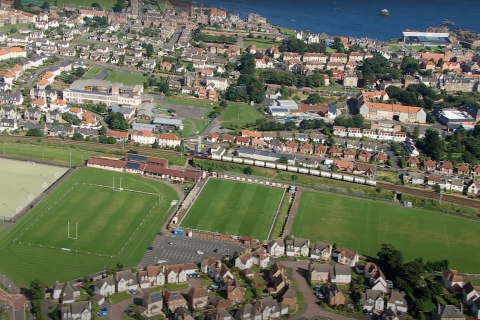Dutch track access charges under the microscope again

The Dutch infrastructure pricing regime is under examination. Track access charges in the Netherlands are way higher compared to Germany. Simultaneously, rail is more expensive than road transport. These differences hinder a level playing field for rail freight between the two countries, but they also delay the modal shift from road to rail.
During a parliamentary debate, the VVD party mentioned that the pricing difference between Dutch and German track access charges and between road-rail creates inequality and not the conditions for the modal shift.
In response, the Dutch State Secretary for Infrastructure and Water Management, Stientje van Veldhoven, promised to write a letter to the House of Representatives, explaining the differences in track access charges between countries and how they build up.
More investments, less subsidising
While Germany decided to almost nullify the country’s track access charges until the end of 2021, this is not the case in the Netherlands. Apart from that, the two countries already had considerable differences in the way they charge for infrastructure usage, with the Netherlands being more expensive. “You cannot say that you are aware of what happens in neighbouring countries or that you cooperate with Germany and still maintain such a pricing difference”, says Hans-Willem Vroon, director of Dutch interest group RailGood.
“The government spends money in subsidies of nearly 3 million euros per year to motivate companies and shift from road to rail, but is this what we need?” he wonders. First and foremost, the Netherlands need to create a better environment for existing rail freight companies and the infrastructure. This means that track access charges should reduce, the railway network and system should be harmonised with Germany’s, for instance, and the capacities should also grow, he adds.
Subsidising for the modal shift without providing palpable solutions to burning issues like the price difference between road and rail will not work. According to Vroon, the only solution would be the Dutch rail sector becoming more competitive and attractive.
Call to the new cabinet
RailGood also sent an official letter to Mariëtte Hamer, who will be responsible for forming the new cabinet of the Netherlands. The organisation asked the government on behalf of companies like LTE Netherlands, Captrain Netherlands, Lineas and SBB Cargo International to “finally let the Dutch rail freight grow”.
Specifically, it pointed out five pillars for this to happen:
- The rail freight infrastructure should be subject to sufficient maintenance and modernisation to be fully reliable and available.
- The European Rail Traffic Management System (ERTMS) must be fully interoperable. Moreover, rail freight operators must be fully compensated for the modifications and replacement of the locomotives necessitated by the ERTMS programme implementation.
- Infrastructure charges must be finally subject to a level playing field between rail freight transport, road transport and inland shipping.
- Ensuring sufficient and competitive rail capacity for freight transport, now and in the future, through upgraded hinterland rail connections under the TEN-T regulations, the use of longer trains and cooperation between the Dutch and German transport ministries.
- Ensure that the Ministry of Infrastructure and Water Management and the management of ProRail are integral and decisive. To this end, it is desirable to place the entire freight transport and seaport policy under the authority of a single government member in the next cabinet.
Also read:
- Government grants for Dutch companies that want to shift to rail
- Germany wants to almost nullify track access charges
- EU supports rail in the Netherlands with 62 million
You just read one of our premium articles free of charge
Want full access? Take advantage of our exclusive offer




